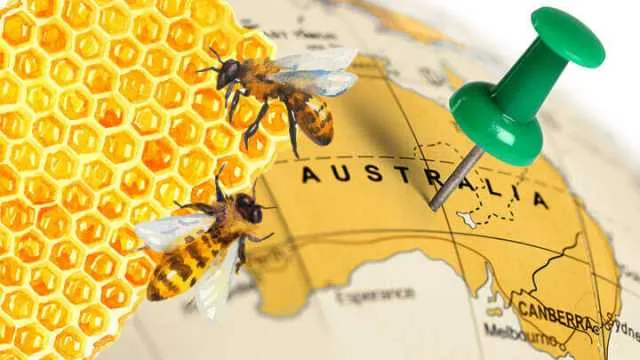
- Share on Facebook584
- Share on Pinterest
- Share on Twitter
If you’ve been following health news in recent years, then you’ve probably already heard of manuka honey. This type of honey hails from the manuka (Leptospermum scoparium) trees of New Zealand. It has up to 200 times the antibacterial properties of other honey.
Manuka honey is in high demand these days, because of its potent antibacterial, antiviral and antifungal properties. Researchers have found it to be extremely useful in wound dressing. It is also a leading contender for a natural alternative to antibiotics. This is key, as many strains of bacteria are growing resistant to conventional antibiotics.
An exciting new discovery

Though Manuka is in high demand, New Zealand can only produce a limited amount. That’s why a new discovery by researchers at the University of Technology Sydney (UTS) is so exciting. A UTS research team, led by Liz Harry, found that honeys from other Leptospermum trees native to Australia have similar levels of methylglyoxal, the active compound in manuka honey that is responsible for many of its benefits.
On the basis of their research, recently published in the journal PLOS One, the study authors explain:
“Most commercially available therapeutic honey is derived from flowering Leptospermum scoparium (manuka) plants from New Zealand. Australia has more than 80 Leptospermum species, and limited research to date has found at least some produce honey with high non-peroxide antibacterial activity (NPA) similar to New Zealand manuka, suggesting Australia may have a ready supply of medical-grade honey.”
On manuka honey specifically, Nural Cokcetin, a researcher at UTS, states:
“All honeys have different flavors and medicinal properties, depending on the flowers bees visit for nectar. What makes manuka honey so special is the exceptionally high level of stable antibacterial activity that arises from a naturally occurring compound in the nectar of manuka flowers. It’s the ingredient we know acts against golden staph and other superbugs resistant to current antibiotics.”
Tests of active compounds in honey is successful
Testing the levels of methylglyoxal in Australian Leptospermum honeys yielded positive results. According to Cokcetin:
“Our study provides the proof for what we’ve long assumed — that this compound, methylglyoxal (MGO), is present in high levels in Australian manuka honeys. These findings put Australian manuka honey on the international radar at a time when antibiotic resistance is recognized as a global crisis.”
To this notion, Harry adds:
“That the manuka varieties in Australia are just as active as those in New Zealand, and have essentially the same chemical profile, will add significant value to Australian honey for beekeepers and provide a plentiful supply of medicinal honey.”
This is exciting news, indeed. It means that there will soon be a greater supply of potent medicinal honey on the market to meet the growing demand. While all types of raw, unprocessed honey have a world of benefits, manuka is special — and its relatives apparently are, too!
What can you do with manuka honey?

Manuka honey — and its Australian honey relatives — are useful for a wide range of health conditions. Just a few include:
- Dressing wounds
- Soothing burns
- Treating eczema, abscesses and dermatitis
- Promoting beneficial gut bacteria
- Combating plaque and gingivitis
The more we learn about manuka honey, the more benefits we will likely find. Liquid gold from “down under” truly is an amazing natural medicine.
– Tanya Mead
- Share on Facebook584
- Share on Pinterest
- Share on Twitter

